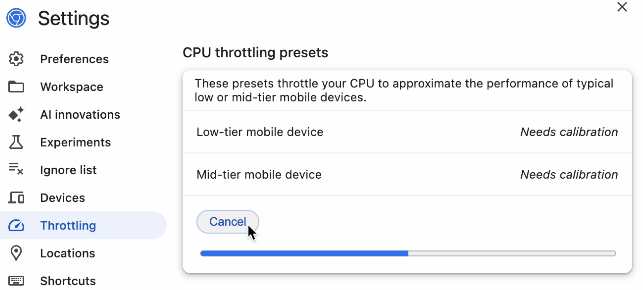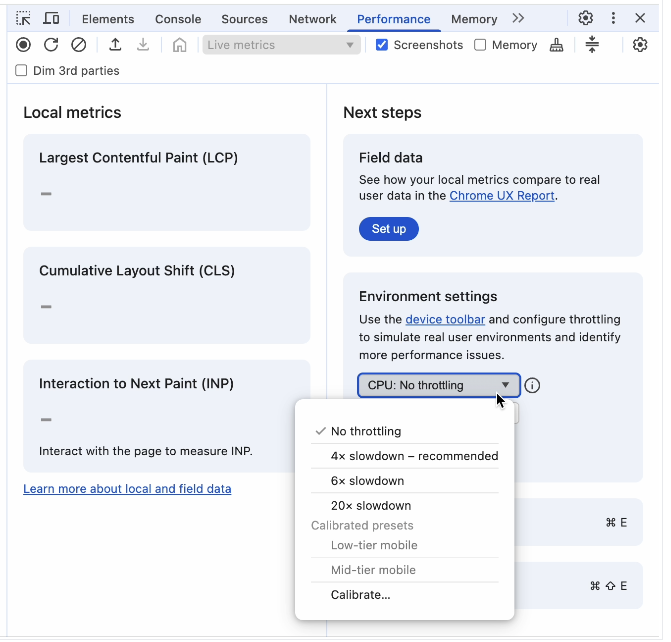Chrome has added new DevTools features that help developers test website performance based on real-world data.
Available in Chrome 134, these tools include CPU throttling calibration and other improvements that help bridge the gap between development environments and actual experiences.
How This Helps
Developers build websites on powerful desktop computers. However, many users visit these sites on much slower mobile devices.
This creates a problem: performance issues may not show up during testing.
Chrome DevTools has offered CPU throttling for years, letting developers simulate slower devices. But choosing the right throttling level has been mostly guesswork.
This update is designed to eliminate the guesswork.
CPU Throttling Calibration
The main new feature in Chrome 134 is CPU throttling calibration. It creates testing presets specifically for your development machine.
After a quick test, DevTools creates two options:
- “Low-tier mobile” – Mimics very basic devices
- “Mid-tier mobile” – Matches average mobile device speed
Brendan Kenny states in the Chrome Developers Blog:
“We generally recommend the ‘mid-tier’ preset for most testing. If many of your users have even slower devices, the ‘low-tier’ option can help catch issues affecting those users.”
Setting up calibration is easy:
- Open the Performance panel’s Environment settings
- Select “Calibrate…” from the CPU throttling dropdown
- Let DevTools run a quick test
- Start using your new calibrated presets
What Throttling Can & Can’t Do
The new calibration makes testing more accurate, but it has limits.
Throttling works by pausing the browser tab to make tasks take longer. This method is useful for simulating JavaScript and layout calculations.
Tests show that calibrated throttling closely matches how these processes run on real mobile devices.
However, CPU throttling doesn’t accurately simulate:
- Graphics-heavy operations
- Slower storage speeds
- Limited memory
- Device heating issues
Chrome’s testing showed that visually complex pages could take twice as long on real mobile devices compared to simulated tests.
This means you should still test on real devices, especially for visually rich websites.
Real-World Data Integration
Besides CPU calibration, Chrome 134 adds several features that use real-world performance data:
- Throttling suggestions based on your actual site visitors
- Alerts when your test results don’t match real-user experiences
- Performance insights that flag mismatches between tests and reality
- Smarter organization of performance tips based on your users’ actual needs
- Better tracking of what settings were used for each test
These features help ensure your testing matches what users experience rather than artificial lab conditions.
Why It Matters For SEO & Marketing
These new tools solve a disconnect between websites that work well in development but struggle on real devices.
Chrome 134 helps ensure your performance improvements benefit users by providing more realistic testing conditions.
As mobile continues to dominate web traffic, these tools provide a better foundation for improving user experience, conversion rates, and search rankings.




